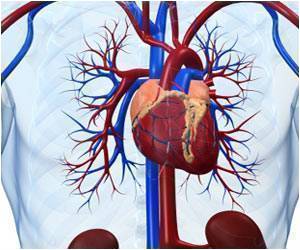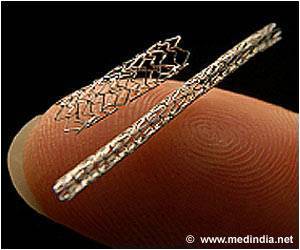A common circulation problem in which reduced blood flow can lead to complications that jeopardize the limbs is known as peripheral arterial disease, possibly even requiring amputation.

In the amputation study, Mayo researchers analyzed patients in the Rochester Epidemiology Project, a National Institutes of Health-funded medical records pool that makes Olmsted County, Minn., the home of Mayo Clinic, one of the few places worldwide where scientists can study virtually an entire geographic population to identify health trends. They found that as use of revascularization to improve circulation rose, the amputation rate dropped. The study covered 1990-2009.
"This is an important study because frequently patients who have peripheral arterial disease -- and there are about 12 million Americans who have some leg pain that can be connected to it -- may progress to amputation. They may develop rest pain, gangrene, and if an intervention is not performed, they may lose the limb," says senior author Peter Gloviczki, M.D., a Mayo Clinic vascular surgeon and president of the Society for Vascular Surgery. "This study shows that the use of endovascular interventions -- stents, balloons or other catheter-based interventions — or open surgical bypass effectively reduced the amputation rate."
Patients with leg pain should report it to their physicians, and people with risk factors for peripheral arterial disease, such as smoking, high cholesterol, male gender, hypertension or diabetes, should take care of the medical conditions that may lead to or complicate peripheral arterial disease, he says.
"In addition, patients who have leg pain and peripheral arterial disease frequently have silent heart disease, so the patient and primary care doctor should evaluate, and if the condition is significant, if the pain is something that interferes with the quality of life, then they should consult with a vascular surgeon," says Dr. Gloviczki, the Joe M. and Ruth Roberts Professor of Surgery at Mayo Clinic.
Other Mayo studies presented at the conference found that:
Advertisement
"The trend is that we do more and more stent procedures because it is easier for the patient, it can be performed in very high-risk patients and there is less early complication. The drawback is that we have to follow these patients lifelong, every six months to a year, because secondary complications or secondary interventions may be needed. And rarely, even the stented aneurysm can rupture," says Dr. Gloviczki, a co-author, so it is not a complete solution for aneurysm repair yet. There are many patients who actually will do better with open repair, but stent repair is still an excellent new procedure that patients should ask about."
Advertisement
Popliteal artery aneurysms are dangerous because about 20 percent involve severe leg circulation problems, and this type of aneurysm can throw blood clots and might lead to amputations, says Dr. Gloviczki. The goal of aneurysm repair is to prevent amputation, improve circulation and help with problems walking, he says.
"The study found that use of a stent is a good and effective way to treat popliteal artery aneurysm," Dr. Gloviczki says. "It is not clearly better for all patients than open surgical bypass, but it is especially useful in patients who are high surgical risk for open surgery or anesthesia, such as patients who have had heart attacks or who have heart failure or any general overall condition that makes open surgery more complicated."
Source-Eurekalert









